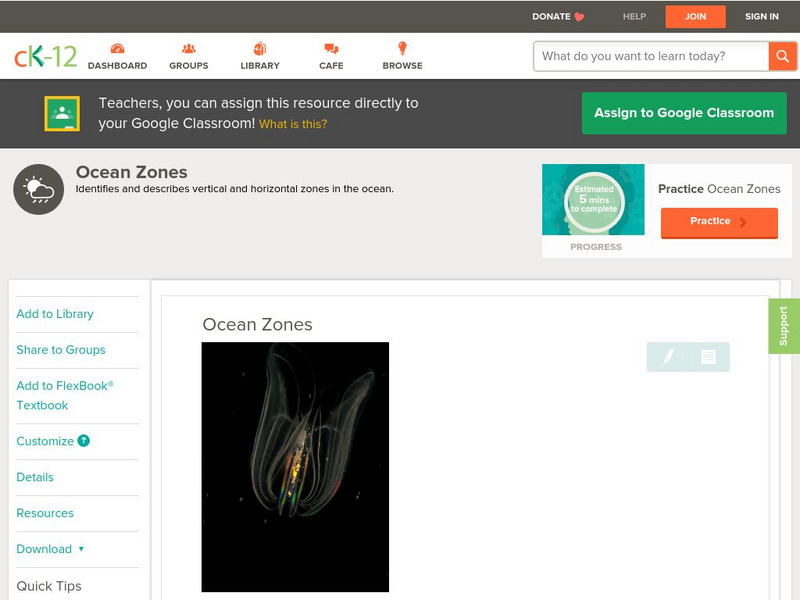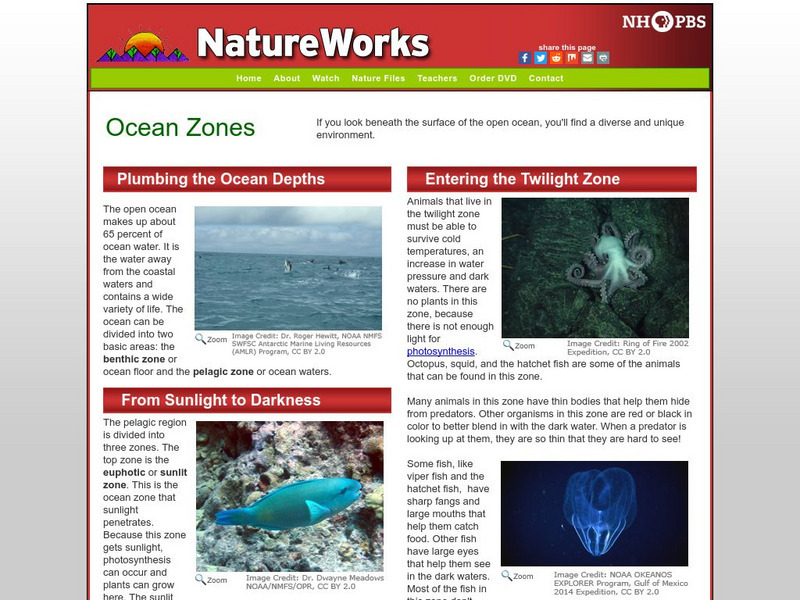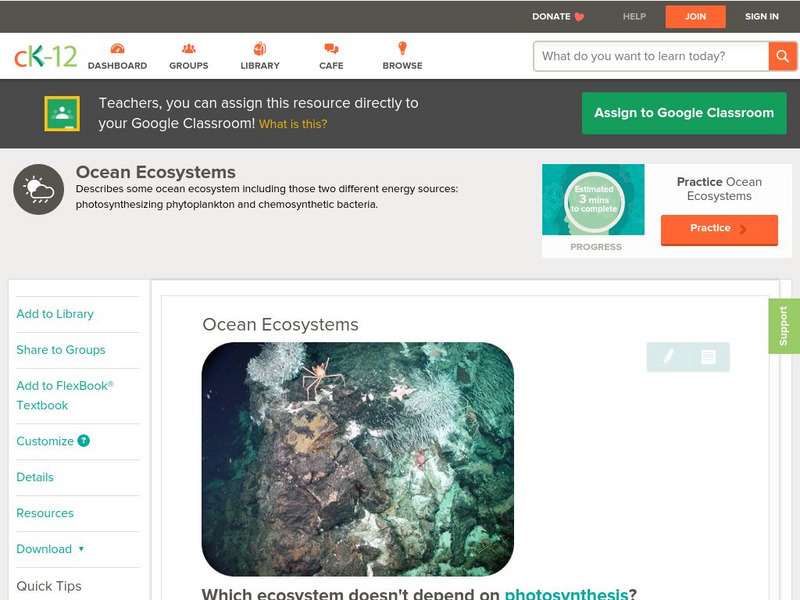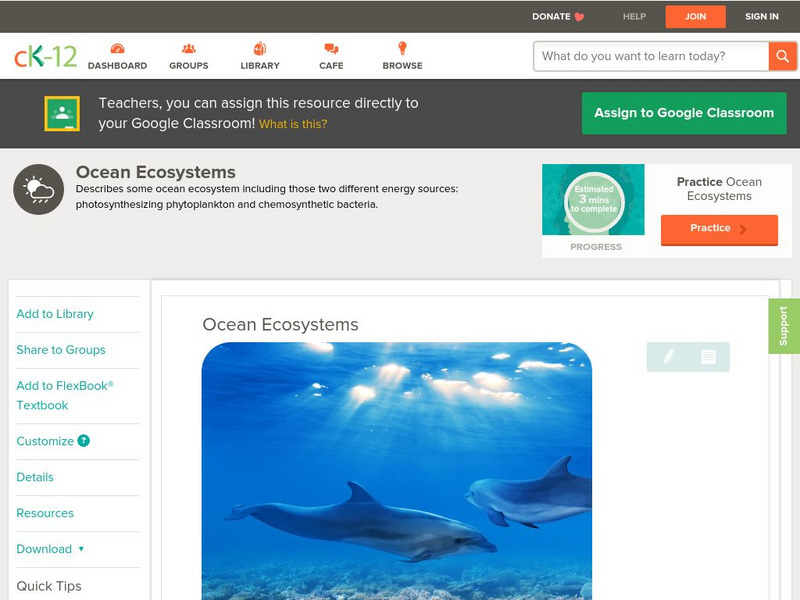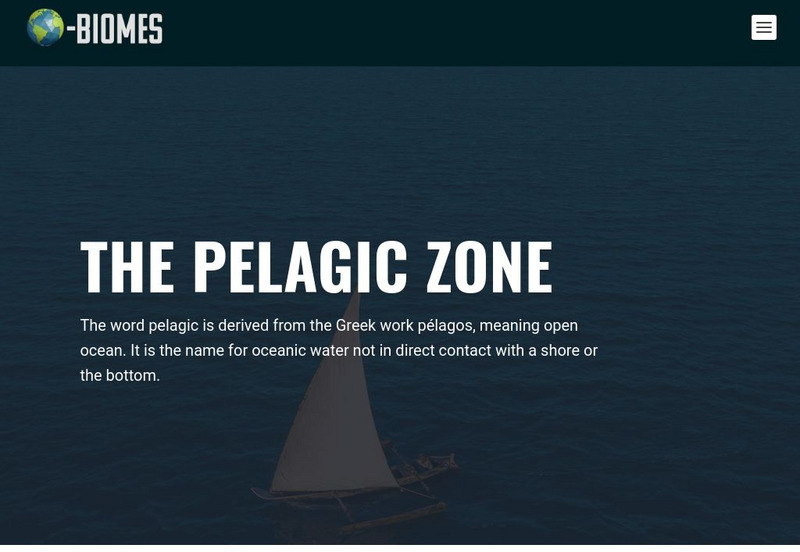Hi, what do you want to do?
Curated OER
Activity 1-Cold Water, Hot Water and Super-Heated Water!
Students investigate hydrothermal vents by observing a simple model designed to show that hot water rises when it's heated. First, students listen as the teacher explains hydrothermal fluids and vents. Students watch as the teacher...
Curated OER
Water Density Boundaries
Students create observable layers in water that represent a separation based upon density differences. They model density boundaries using differences in temperature and salinity. They, in groups, perform a meaningful experiment...
Curated OER
Getting the Local Scoop
Fourth graders practice interviewing professionals in their area about their careers at a local watershed. They identify at least three careers that depend on the watershed and discuss its history. They write a composition to end the...
Curated OER
What is an Estuary?
Students define the terms estuary and watershed. They conduct an experiment to determine the density differences between fresh and saltwater. They examine the salinity distribution of the Peconic Bay Estuary.
Curated OER
Looking into Earth with GIS
Students work with data from a seismic wave model in a freely available GIS (geographic information system) program, ArcVoyager SE. Using a GIS, they examine maps and produce graphs to explore variations in seismic wave velocities at...
Curated OER
The Buoyancy Factor
Students examine why some objects float in water while others sink and the ability of something to float does not depend entirely on its weight. Archimedes' principle is introduced and buoyant force is discussed. Practice calculations...
Curated OER
Vocabulary Review: Completing Sentences
In this vocabulary worksheet, students check the word that will correctly complete a sentence, 7 sentences. Students choose from 4 words.
Curated OER
Tic-Tac-Toe for Layers of the Earth
Eighth graders identify the different layers of the earth. In this earth science lesson, 8th graders choose a project to do from a given list according to their learning style. They present their finished project in class.
CK-12 Foundation
Ck 12: Earth Science: Ocean Zones Study Guide
Review the concepts of ocean zones in this study guide.
Boise State University
Boise State University: Ocean Exploration: Abyssopelagic (Abyssal) Zone
Learn about the very cold, dark region of the ocean known as the abyss. Includes information on the origin of the name of this ocean zone, as well as information on its depth and animal life.
CK-12 Foundation
Ck 12: Earth Science: Ocean Zones
[Free Registration/Login may be required to access all resource tools.] Describes the different zones of the ocean.
CK-12 Foundation
Ck 12: Earth Science: Ocean Zones
[Free Registration/Login may be required to access all resource tools.] Describes the different zones of the ocean.
Other
Winston Salem/forsyth Schools: Neritic Zone
This 25-page teacher resource (Word document) offers information and discussion questions on the ocean's neritic zone.
Boise State University
Boise State University: Hadalpelagic Zone
View images and learn facts about this zone found deep in the ocean.
Science Struck
Science Struck: Understanding the Ocean Ecosystem
Describes the two organisms capable of photosynthesis in an ocean ecosystem, the different ocean zones and the plants and animals that live in them, some facts about the ocean, and the five oceans of the world.
Science Struck
Science Struck: The Differences Between Benthic and Pelagic Zones
Learn the characteristics of these two oceanic zones and of the plants and animals that live in them.
PBS
Nh Pbs: Nature Works: Ocean Zones
Discover more about the underocean environment at this site that surveys animals, environmental factors such as light and temperature, currents, animals, plants, and the like.
Wikimedia
Wikipedia: Bathyal Zone
Learn where this ocean zone is located, average temperature and the unique traits of the animals that reside there.
Smithsonian Institution
National Museum of Natural History: Ocean Planet
Detailed website that was a companion to a 1995 traveling exhibit of the Smithsonian. Links to lesson plans and other educational materials are at the bottom of the page. Enter the exhibition to explore the world of the ocean.
CK-12 Foundation
Ck 12: Earth Science: Ocean Ecosystems
[Free Registration/Login may be required to access all resource tools.] Describes organisms found in varying ocean ecosystems.
CK-12 Foundation
Ck 12: Earth Science: Ocean Ecosystems
[Free Registration/Login may be required to access all resource tools.] Describes organisms found in varying ocean ecosystems.
National Geographic
National Geographic: Encyclopedia: Ocean Trench
Comprehensive information about deep-ocean trenches. Includes maps, a video [1:29], and a vocabulary list.
Untamed Science
Untamed Science: Biology: World Biomes: Intertidal Zone: Aquatic Biome
Learn about the flora and fauna of the intertidal aquatic zone and the characteristics that describe this aquatic biome through reading and watching video clips. [6:42]
The Wild Classroom
The Wild Classroom: Biomes of the World: Oceanic Pelagic Biome
Learn about the oceanic pelagic ecosystem. Find out about plants, animals, adaptations, and conservation efforts.
Other popular searches
- Ocean Zones Diagram
- Ocean Zones Graph
- Marine Ocean Zones
- Ocean Zones Week 1
- Ocean Zones Worksheets
- Ocean Zones Ppt
- Zones of the Ocean
- Ocean Zones Pot
- Ocean Zones Oil
- Ocean Zones Oil Spill















